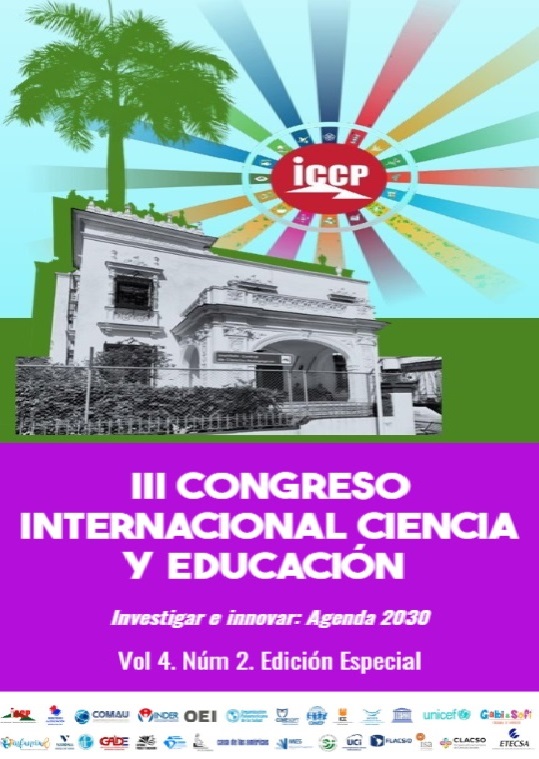The family in the stimulation of communication of children with Autism
Abstract
This article aims to present the results of a research conducted on the preparation of families to stimulate the communication of children between 2 and 5 years old with autism. The application of the instruments revealed the need to create a guidance manual for families for the development of communication in children with autism. It provides general information about the created manual (aspects inherent to the disorder, specific characteristics of the communication process, general guidelines on how to work with these people, and specific guidelines for developing communication), as well as the methodology for its elaboration. The results achieved in its implementation during two school years are shown. As the main result, it was obtained that 100% of the interviewed families express the need to have a guidance manual to stimulate the development of their children's communication, pointing out that communication is one of the most affected areas in children with autism and they require precise guidance to work at home. In conclusion, the children have little communicative intent and use "the instrumental use of people" as one of the forms of communication. Teachers and specialists consider that families have limitations to enhance the communication process of their children with autism, arguing that they have a lot of ignorance about the disorder, mainly in the treatment, and do not know how to make their children speak.
Downloads
References
Arciniegas Peñalosa, D., Portilla Florez, A., Vanegas Acosta, E., Silgado Cañas, D., & Rojas Peñaloza, J. (2024). Incidencia de la Teoría de la Autodeterminación en la Calidad de Vida de los Estudiantes de Noveno Grado de Arauca. GADE: Revista Científica, 4(1), 53-69. Recuperado a partir de https://revista.redgade.com/index.php/Gade/article/view/354
Arés, P. (2018). La Familia. Una mirada desde la Psicología. En Descubriendo la Psicología. Editorial Academia, La Habana.
Capote Lavandero, G., Aguirre Obando, E. A., Analuisa Analuisa, E. F., & Cevallos Yapo, J. L. (2024). Evaluación de la asociación entre la estimulación temprana y las habilidades motrices básicas en el deporte de iniciación. GADE: Revista Científica, 4(1), 1-13. Recuperado a partir de https://revista.redgade.com/index.php/Gade/article/view/345
Cigarroa, I., Riquelme-Hernández , C., Reyes-Barría , J. P., Vargas, A., Zapata-Lamana, R. ., Gutiérrez Echavarría, M. A. ., Sepúlveda-Martin, S. ., Toloza-Ramírez, D. ., & Maruntoiu, S. . (2024). Efectos de programas basados en artes marciales sobre rasgos autistas en niños y adolescentes: una revisión sistemática. Retos, 56, 167–178. https://doi.org/10.47197/retos.v56.100237
Colectivo de autores (2023a). “La educación y orientación psicopedagógica en grupos de whats app a familias, docentes y directivos, que atienden niños y adolescentes con TEA y DI” (Parte I) Resultado científico. ICCP
Colectivo de autores (2023b) Multiplataformas: una nueva forma de orientación y educación a docentes y familias que atienden niños, niñas, adolescentes en situación de discapacidad. Resultado de investigación. ICCP.
López Díaz, J. M., Moreno Rodríguez, R., & López Bastías, J. L. (2021). Análisis del impacto de un programa deportivo en niños con Trastorno del Espectro del Autismo. Retos, 39, 98–105. https://doi.org/10.47197/retos.v0i39.74841
Mariño Sánchez, M., Rico Díaz, J., Fernández, J. E. R., & Peixoto Pino, L. (2021). Instrumentos para evaluar las habilidades motoras en niños con Trastorno del Espectro Autista entre 5 y 12 años: Revisión Sistemática. Retos, 42, 286–295. https://doi.org/10.47197/retos.v42i0.87487
Ríos, I. (2007) Fundamentos científicos de la Educación Preescolar cubana. En Compendio de Trabajos de posgrado. Educación Preescolar. Editorial Pueblo y Educación.
Silva de Andrade, M., Bicalho , A. V. ., da Silva Montalvão , A. V. ., Alves Ferreira, C. E. ., Duarte Costa, D. G. ., Ribeiro da Silva, V. ., Stanele, W. ., & da Silva Triani, F. (2023). Representaciones sociales de profesores de educación física sobre el autismo: análisis de tesis y disertaciones defendidas en programas de posgrado brasileños Retos, 48, 327–332. https://doi.org/10.47197/retos.v48.95719
Siverio, A. et al.(2012). Colección “Para que la familia eduque mejor”. Editorial Pueblo y Educación
Torres, M. (2023) “Familia, unidad y diversidad”. Editorial Pueblo y Educación.
Vallejos Meriño, C., Gómez Álvarez, N., & Campos Campos, K. I. (2024). Impacto de la clase de Educación Física en escolares diagnosticados con Trastornos del Espectro Autista al interior de una Escuela Especial en Chile (Impact of the physical education class on schoolchildren diagnosed with Autism Spectrum Disorders in a Special School in Chile). Retos, 52, 499–508. https://doi.org/10.47197/retos.v52.102286.
Copyright (c) 2024 Imilla Cecilia Campo Valdés,Yaíma Demósthene Sterling,Adys Yadira Remón Amarelle

This work is licensed under a Creative Commons Attribution-NonCommercial-NoDerivatives 4.0 International License.






